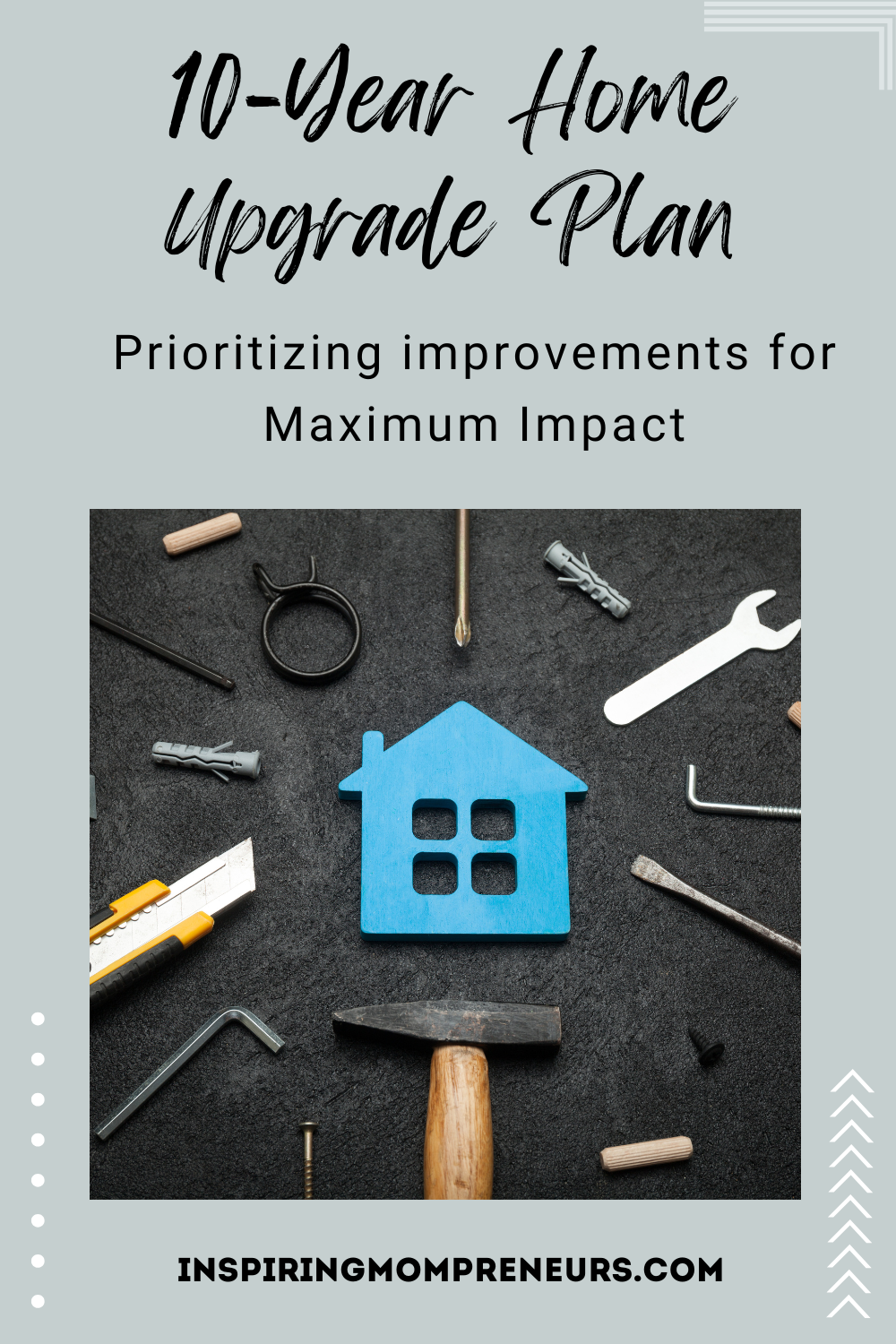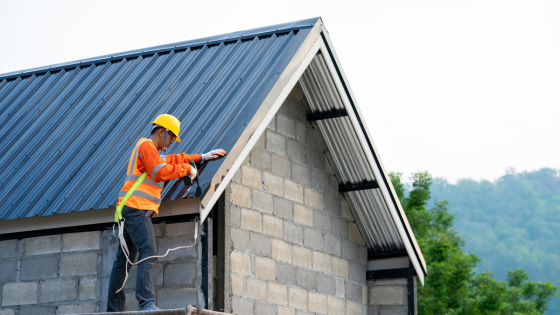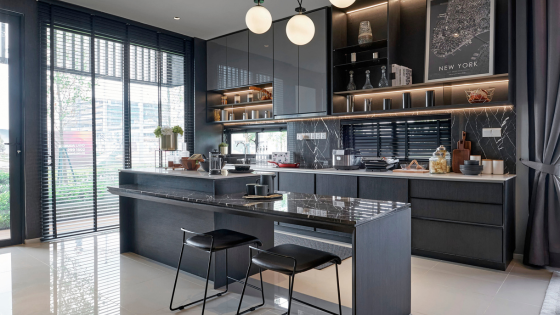In Long Island, planning home upgrades strategically can significantly enhance both your living experience and property value, especially given the competitive home prices in the area. Undertaking a remodel can seem overwhelming, but with a well-structured five-year plan, you can prioritize projects, manage costs, and ensure impactful results. This guide outlines essential upgrades to tackle each year, from structural improvements to aesthetic enhancements, to help you maintain a beautiful and functional home. By following this plan, you’ll maximize your investment and enjoy a more comfortable, modern living space.
10-Year Home Upgrade Plan: Prioritizing Improvements for Maximum Impact
 Year 1: Assess and Plan
Year 1: Assess and Plan
The first year of your home upgrade plan should focus on assessing the current condition of your home and planning future improvements. Start with a thorough home inspection to identify any immediate issues, such as structural damage, outdated systems, or potential hazards.
Create a list of necessary repairs and improvements, prioritizing those that impact safety and functionality. Establish a budget and timeline for each project, considering both short-term needs and long-term goals.
This assessment phase sets the foundation for a successful five-year upgrade plan, ensuring that all projects are well-planned and strategically executed.
Year 2: Plumbing and Electrical Upgrades
In the second year, prioritize essential systems like plumbing and electrical. Outdated plumbing and wiring can pose significant risks and inefficiencies. In Long Island plumbing experts can be found easily to help upgrade your system, ensuring safety and compliance with current standards.
Address any known issues and consider upgrading to more efficient fixtures and systems. For electrical upgrades, ensure your home can handle modern demands by updating the circuit breaker, adding outlets, and installing energy-efficient lighting. These upgrades not only improve safety but also enhance the overall functionality and efficiency of your home.
Year 3: Structural Repairs and Roof Maintenance
By the third year, focus on structural repairs and roof maintenance. Address any issues identified during your initial assessment, such as foundation cracks, weakened beams, or damaged siding. Ensuring your home’s structural integrity is crucial for long-term safety and stability. Additionally, prioritize roof maintenance or replacement if needed. A well-maintained roof protects your home from weather damage and enhances energy efficiency. Regular inspections and timely repairs can extend the life of your roof, preventing costly water damage and improving your home’s overall durability.

Year 4: Energy Efficiency and Insulation
In the fourth year, aim to improve your home’s energy efficiency. Start with an energy audit to identify areas where you can reduce energy consumption. Upgrading insulation in walls, attics, and basements can significantly lower heating and cooling costs. Replace old windows and doors with energy-efficient models to minimize heat loss and improve comfort. Consider installing a programmable thermostat and upgrading to energy-efficient appliances. These improvements not only reduce your environmental impact but also lower utility bills, making your home more comfortable and cost-effective to maintain.
Year 5: Aesthetic Enhancements
By the fifth year, it’s time to focus on aesthetic enhancements that boost your home’s appeal. Consider updating the kitchen and bathrooms, as these areas offer the highest return on investment. Modernize these spaces with new fixtures, countertops, and cabinetry. Fresh paint, updated flooring, and new lighting can transform the look and feel of your home. Don’t forget exterior improvements like landscaping, painting, or adding outdoor living spaces. These upgrades enhance curb appeal and create inviting, functional spaces for you and your family to enjoy.
Year 6: Outdoor Living Spaces
Creating or enhancing outdoor living spaces can significantly increase your home’s enjoyment and value. Consider adding a deck, patio, or pergola to provide comfortable areas for relaxation and entertainment. Outdoor kitchens and fire pits are popular features that extend your living space. Landscaping improvements, such as planting trees, shrubs, and flowers, can enhance your yard’s beauty and create a more inviting atmosphere. Ensure these additions are designed to complement your home’s style and meet your family’s needs. Outdoor living spaces not only improve your quality of life but also make your home more attractive to potential buyers.

Year 7: Smart Home Technologies
Integrating smart home technologies can enhance convenience, security, and energy efficiency. Install smart thermostats, lighting systems, and security cameras to control and monitor your home remotely. Smart locks and doorbells add an extra layer of security, while automated lighting and climate control systems help reduce energy usage. Consider integrating a central hub to manage all your smart devices seamlessly. These technologies not only make your home more modern and efficient but also appeal to tech-savvy buyers, increasing your property’s market value.
Year 8: Basement and Attic Conversions
Converting unused basements or attics into functional living spaces can add significant square footage and versatility to your home. Depending on your needs, these areas can become additional bedrooms, home offices, gyms, or entertainment rooms. Ensure proper insulation, lighting, and ventilation to create comfortable and usable spaces. Consult with professionals to address any structural or moisture issues before beginning the conversion. These transformations can provide valuable extra space and increase your home’s overall functionality and appeal.
Year 9: Bathroom and Kitchen Updates
Bathrooms and kitchens are key areas that significantly impact your home’s value and livability. By the ninth year, consider comprehensive updates to these spaces if they haven’t been addressed earlier. Modernize your kitchen with new countertops, cabinets, appliances, and lighting. In the bathroom, update fixtures, tiles, and storage solutions for a fresh, contemporary look. These renovations offer high returns on investment and greatly enhance the overall appeal of your home. Functional, stylish kitchens and bathrooms are top priorities for many homebuyers.

Year 10: Regular Maintenance and Final Touches
In the final year of your upgrade plan, focus on regular maintenance and final touches to keep your home in pristine condition. Address any minor repairs, repaint walls as needed, and perform deep cleaning to maintain a fresh appearance. Regular maintenance of HVAC systems, plumbing, and electrical systems ensures long-term functionality and efficiency. Consider any additional small upgrades that enhance your home’s comfort and appeal, such as new hardware, updated light fixtures, or fresh landscaping. Keeping up with regular maintenance and adding finishing touches ensures your home remains in excellent condition and retains its value.
Conclusion
A five-year home upgrade plan allows you to improve your home while managing costs and effort systematically. By prioritizing essential repairs, efficiency upgrades, and aesthetic enhancements, you ensure your home remains functional, beautiful, and valuable. Start with an assessment and plan, followed by essential system upgrades, structural repairs, and energy efficiency improvements.
In subsequent years, focus on enhancing outdoor spaces, integrating smart technologies, and converting unused areas. Finally, update key areas like bathrooms and kitchens, and maintain your home with regular upkeep and final touches. With careful planning and execution, your home can evolve to meet your needs and increase in value, providing long-term benefits for you and your family.
 About the Author
About the Author
Lana Hawkins is a stay-at-home mum by day and author by night. She is passionate about traveling, cooking and home decor.


